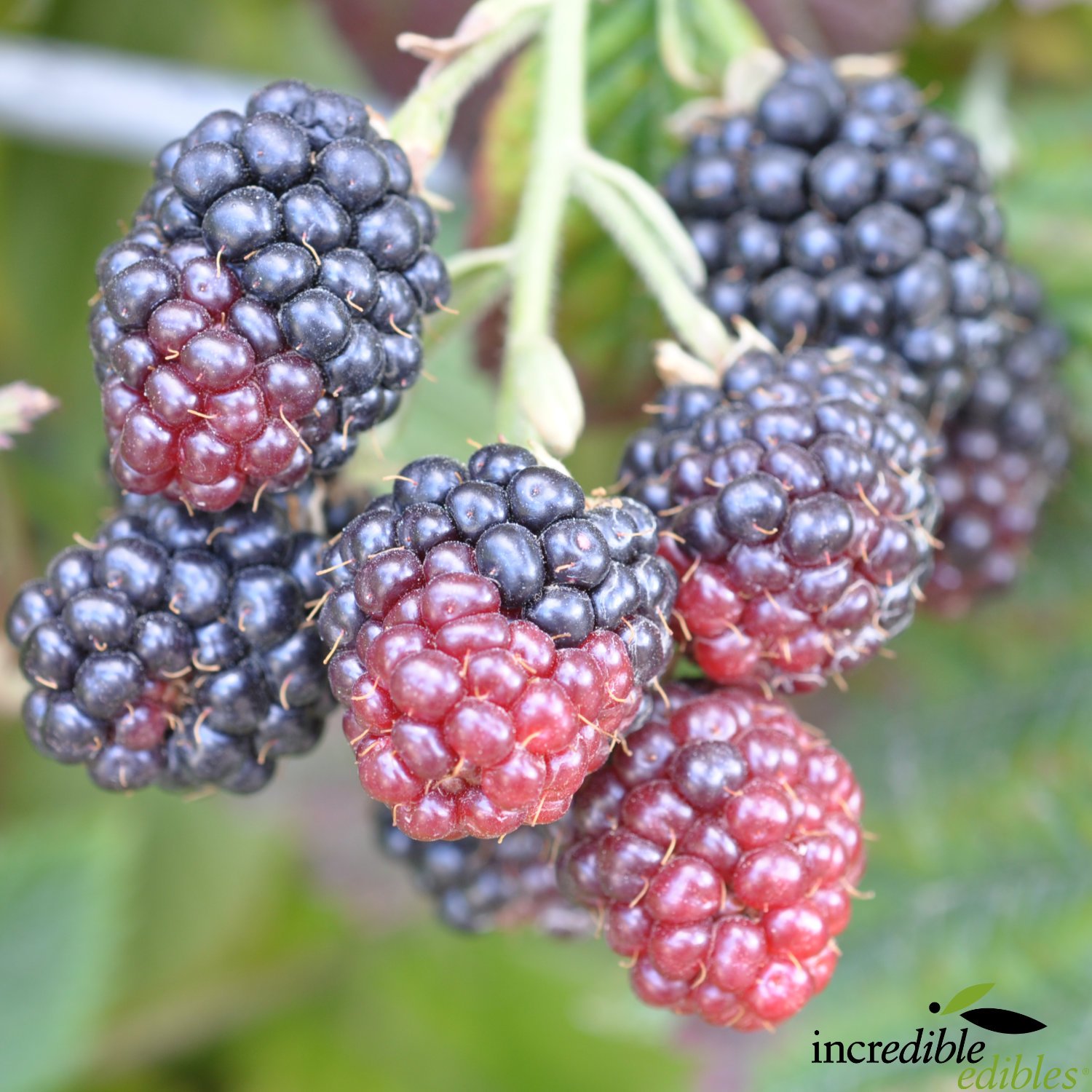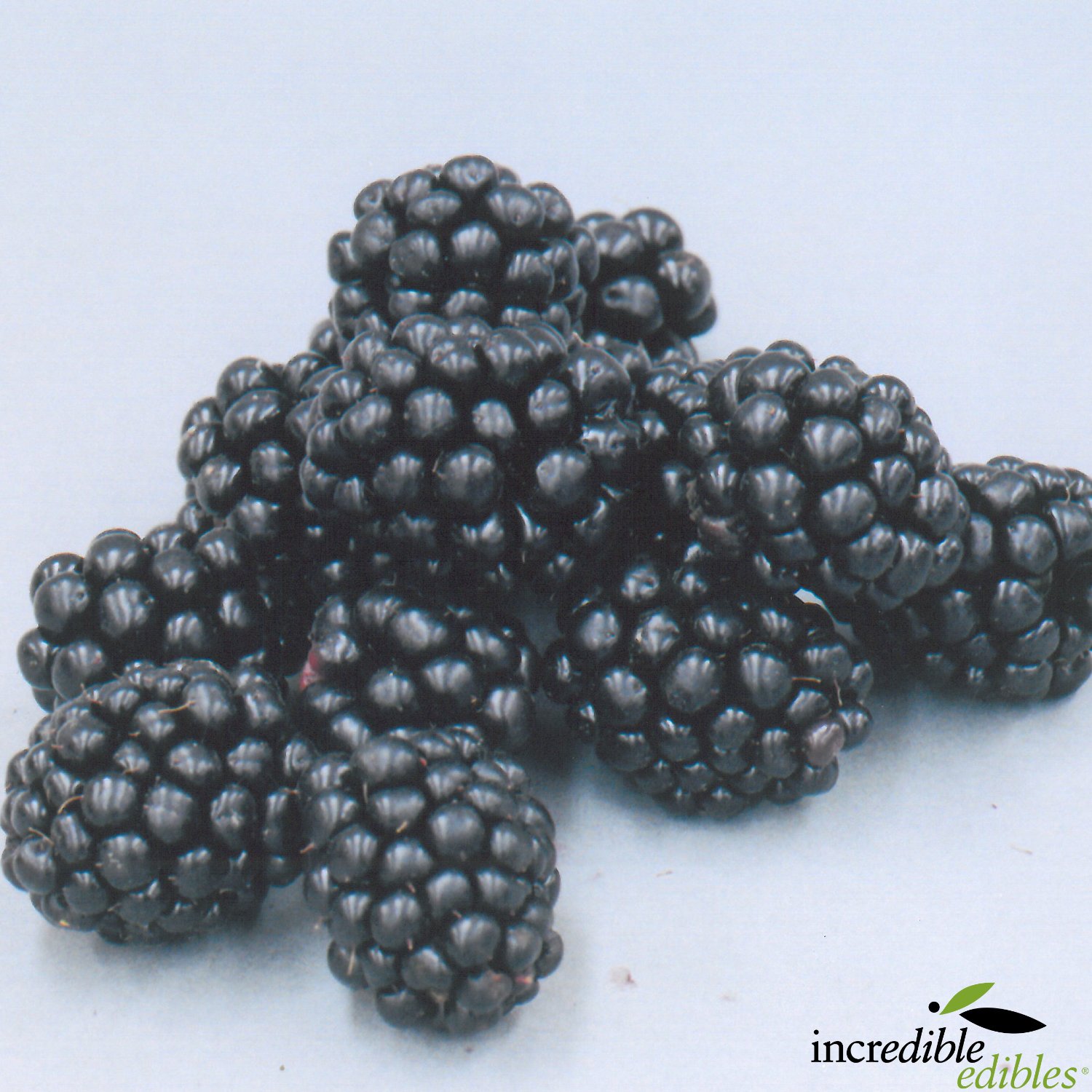 Image 1 of 4
Image 1 of 4

 Image 2 of 4
Image 2 of 4

 Image 3 of 4
Image 3 of 4

 Image 4 of 4
Image 4 of 4





Blackberry Black Satin
White flowers appear in spring, followed by delicious large glossy black conical fruit of excellent sweet flavour. Black Satin Blackberry has thornless upright canes with serrated green leaves that turn to beautiful dark autumn colours. It is self-fertile and grows New Zealand wide.
Black Satin berries should be ready for harvesting during February and March. Perfect to be eaten straight off the plant, chilled for later use in desserts, or turned into jams and jellies, juice, or wine. Blackberries are rich in vitamin C and dietary fibre and contain calcium, phosphorus, and potassium.
Check out our Berry Coulis recipe inspiration page, to lift your ice cream, cheesecake or yoghurt to the next level.
Like any deciduous fruiting plant, they benefit from Copper and Oil sprays during winter to help keep the plant healthy and disease-free. Plant in spaces with plenty of airflow as this will also help keep diseases at bay. Protect only from hot, dry winds, plant in a well-drained position with good moisture content and high in organic matter, as this will see the plant thrive. (Mulch annually in spring).
Pruning all brambles involves tying up strong canes produced in spring and summer and removing thin, weak, and wandering canes. In late summer - early autumn, remove 10cm of the terminal growth of the canes. This will initiate the production of fruiting spurs. Remove fruited canes from the soil base in autumn (or winter in cooler, dryer areas).
Rubus trivialis sp ‘Black Satin’
White flowers appear in spring, followed by delicious large glossy black conical fruit of excellent sweet flavour. Black Satin Blackberry has thornless upright canes with serrated green leaves that turn to beautiful dark autumn colours. It is self-fertile and grows New Zealand wide.
Black Satin berries should be ready for harvesting during February and March. Perfect to be eaten straight off the plant, chilled for later use in desserts, or turned into jams and jellies, juice, or wine. Blackberries are rich in vitamin C and dietary fibre and contain calcium, phosphorus, and potassium.
Check out our Berry Coulis recipe inspiration page, to lift your ice cream, cheesecake or yoghurt to the next level.
Like any deciduous fruiting plant, they benefit from Copper and Oil sprays during winter to help keep the plant healthy and disease-free. Plant in spaces with plenty of airflow as this will also help keep diseases at bay. Protect only from hot, dry winds, plant in a well-drained position with good moisture content and high in organic matter, as this will see the plant thrive. (Mulch annually in spring).
Pruning all brambles involves tying up strong canes produced in spring and summer and removing thin, weak, and wandering canes. In late summer - early autumn, remove 10cm of the terminal growth of the canes. This will initiate the production of fruiting spurs. Remove fruited canes from the soil base in autumn (or winter in cooler, dryer areas).
Rubus trivialis sp ‘Black Satin’

